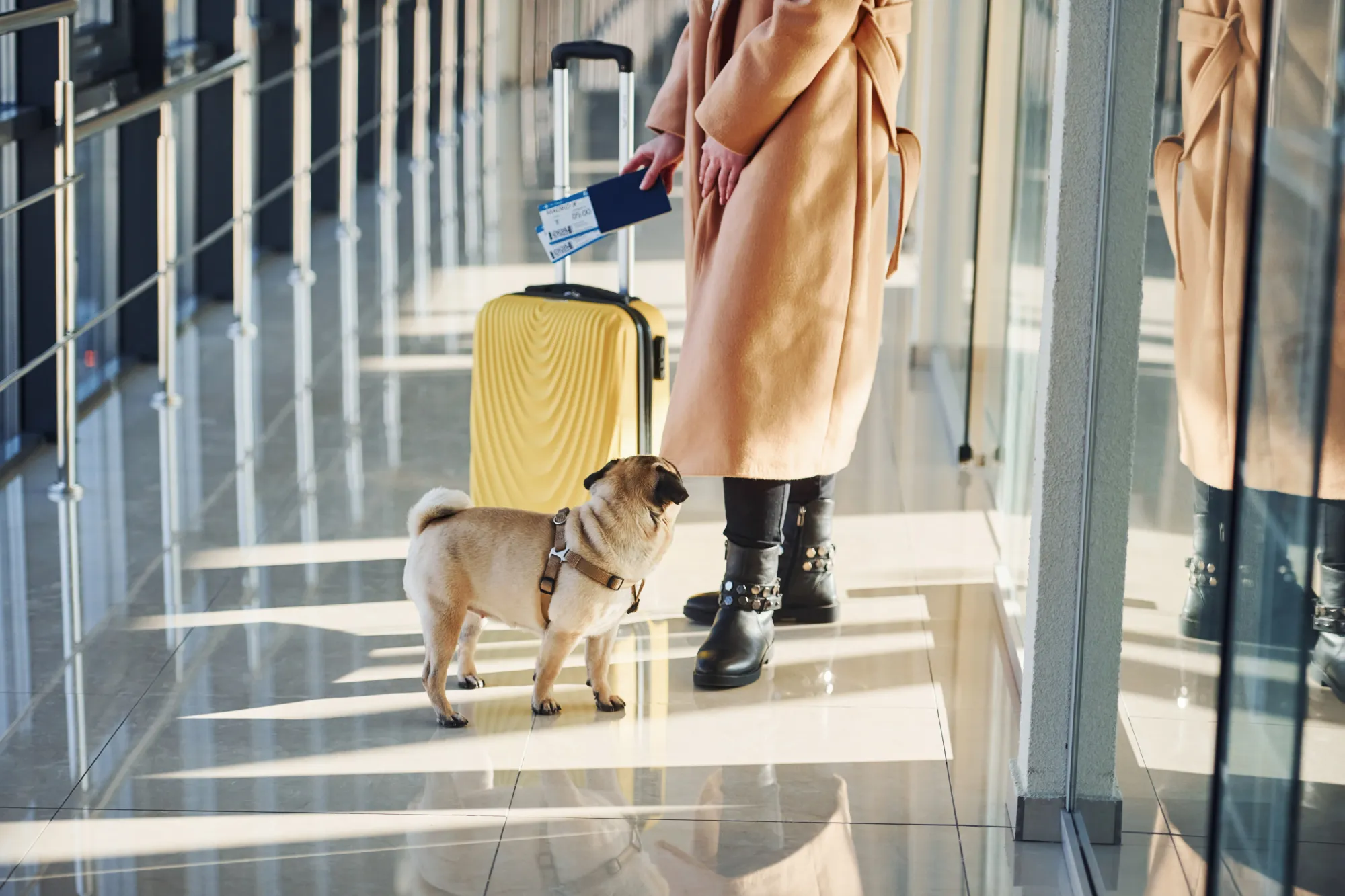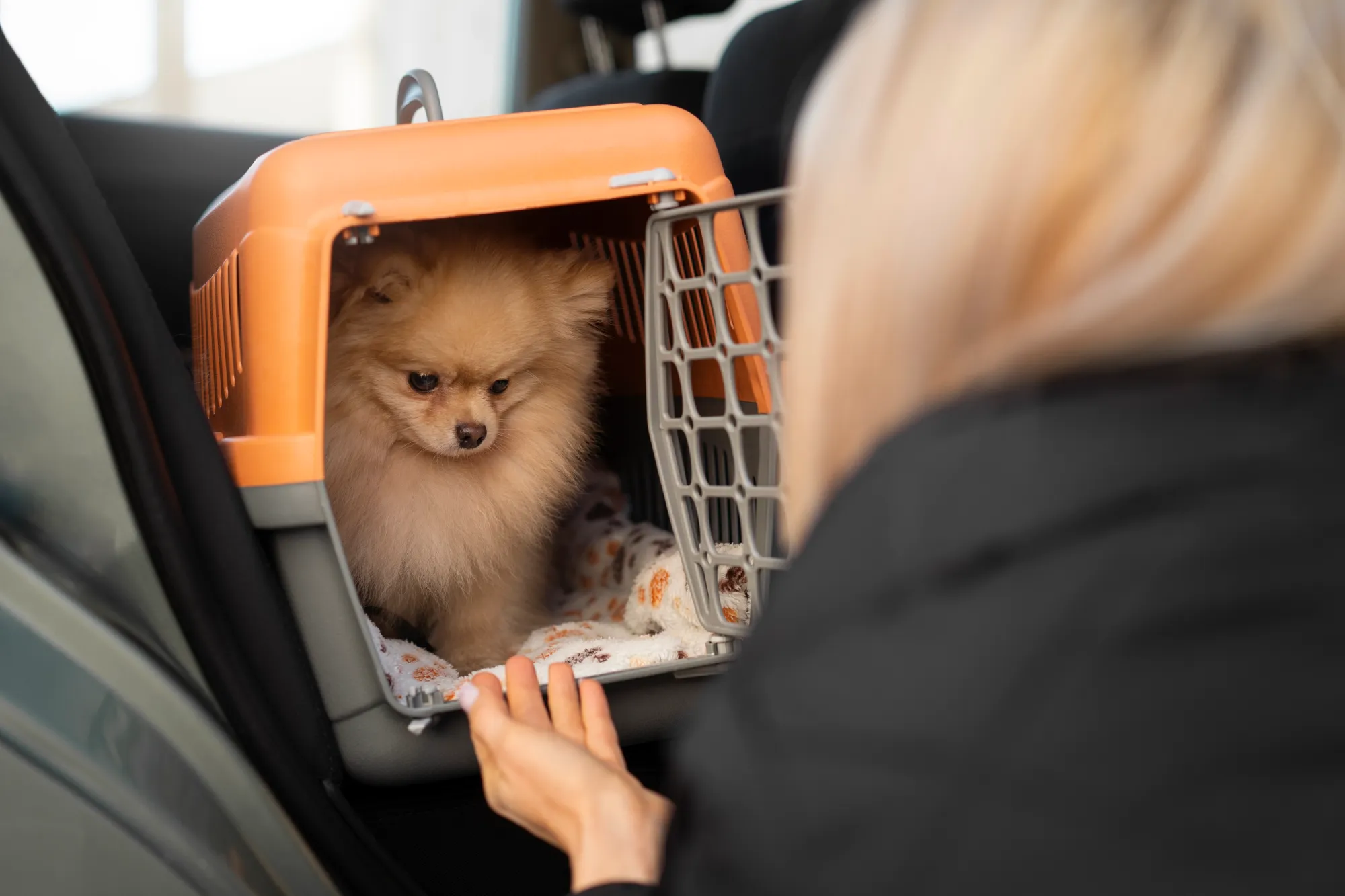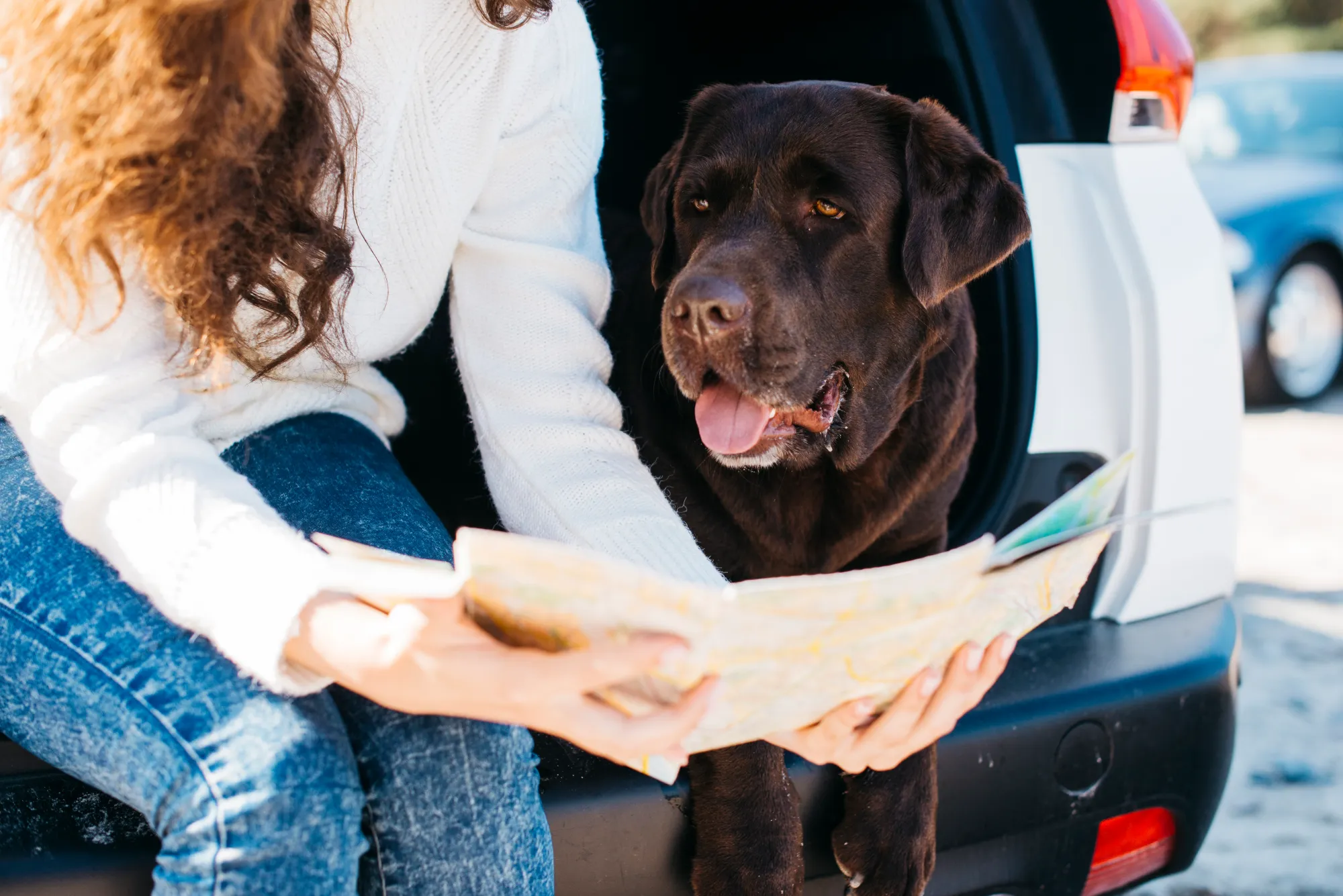Transporting a dog across the country can be a daunting task for pet owners. The journey can be stressful for both the dog and the owner, but with proper planning and preparation, it can be a smooth and safe experience. Whether you are moving across the country or just taking a long road trip with your furry friend, there are several things you should consider before hitting the road.
Firstly, it is important to ensure that your dog is healthy and fit for travel. A visit to the vet is recommended to make sure that your dog is up-to-date on all vaccinations and is in good health. Additionally, it is crucial to get a health certificate from the vet, which is required for traveling across state lines. This document ensures that your dog is healthy and fit for travel and can be presented to authorities if needed.

Preparing Your Dog for Transport
Transporting a dog across the country can be a stressful experience for both the dog and the owner. Preparing your dog for transport is crucial to ensure a safe and comfortable journey. This section will cover the essential steps to take before embarking on a long-distance trip with your furry friend.
Health and Documentation
Before transporting your dog, it is essential to ensure their health and obtain the necessary documentation. A health certificate from a veterinarian is required for air travel and interstate travel. This certificate verifies that your dog is healthy and up-to-date on their vaccinations. It is also recommended to attach identification tags to your dog's collar, including your name, address, and phone number.
Choosing the Right Crate or Carrier
Selecting the right crate or carrier is crucial for your dog's safety and comfort during transport. The crate should be big enough for your dog to stand, turn around, and lie down comfortably. It should also be sturdy, well-ventilated, and secure. A travel crate with a comfortable bed and some toys will make the journey more comfortable for your furry friend.
Training and Familiarization
Training and familiarization are essential to prepare your dog for transport. Introduce your dog to the crate or carrier gradually, and make it a positive experience by offering treats and praise. Practice short trips in the crate or carrier to help your dog get used to it. It is also recommended to take your dog for a walk or playtime before transport to help them relax.
In conclusion, preparing your dog for transport requires careful planning and preparation. Ensuring your dog's health and obtaining the necessary documentation, choosing the right crate or carrier, and training and familiarization are crucial steps to take before embarking on a long-distance trip with your furry friend. By following these steps, you can ensure a safe and comfortable journey for your dog.
Selecting a Transportation Method
When it comes to transporting dogs across the country, there are a few different methods to consider. The best option will depend on various factors, such as the dog's size, age, and temperament, as well as the distance of the journey and the owner's budget. Here are three main transportation methods to consider:
Traveling by Air
Air travel can be a fast and convenient way to transport dogs across the country. However, it's important to note that not all airlines allow pets in the cabin, and those that do often have strict weight limits. Additionally, dogs that are too big to fit under the seat will need to be transported in the cargo hold, which can be stressful for some animals.
To ensure a safe and comfortable journey, owners should choose a pet-friendly airline and purchase a travel carrier that meets the airline's specifications. It's also a good idea to book a direct flight whenever possible to minimize the stress of layovers and transfers.
Traveling by Ground
For dogs that do not do well in the air or are too big to fly, ground transportation can be a good alternative. There are many pet transportation services that specialize in transporting dogs across the country. These services typically use specially equipped vehicles with climate control and comfortable accommodations for the dogs.
One popular ground transportation service is Blue Collar Pet Transport, which offers door-to-door service and personalized attention for each dog. Another option is Royal Paws, which offers both ground and air transportation for dogs of all sizes.
Combining Air and Ground Travel
For longer journeys, it may be necessary to combine air and ground travel. This can be done by flying the dog to a major airport and then using a ground transportation service to complete the journey. This method can be more expensive than either air or ground travel alone, but it can also be less stressful for the dog.
When selecting a transportation method, it's important to consider the dog's needs and comfort above all else. By choosing a reputable and reliable transportation service and taking the necessary precautions, owners can ensure a safe and stress-free journey for their furry friend.
Understanding Transportation Regulations

When transporting dogs across the country, it is important to understand the transportation regulations that apply to your specific situation. This section will cover national and international regulations, as well as breed and size restrictions.
National Regulations
When transporting dogs within the United States, there are certain regulations that must be followed. The Department of Transportation (DOT) requires that all dogs be transported in a safe and humane manner. This includes providing adequate ventilation, food, water, and rest. Additionally, dogs must be secured during transport to prevent injury or escape.
Each state may also have its own regulations regarding the transportation of dogs. It is important to research the specific regulations of the states you will be traveling through to ensure compliance.
International Regulations
Transporting dogs internationally can be more complex than domestic travel. Each country has its own regulations regarding the import and export of animals. Some countries may require a health certificate, vaccination records, or quarantine upon arrival.
It is important to research the regulations of the country you will be traveling to well in advance of your trip. Working with a professional pet relocation service can also be helpful in navigating the complex international regulations.
Breed and Size Restrictions
Some airlines and transportation companies may have breed and size restrictions for dogs. This is often due to safety concerns or limitations in the cargo area of the transport vehicle.
It is important to research the pet policies of the transportation company you will be using. If your dog is a breed that is commonly restricted, you may need to look for alternative transportation options.
By understanding the various transportation regulations that apply to your situation, you can ensure a safe and stress-free journey for your furry friend.
Ensuring Your Dog's Comfort and Safety

When transporting your furry friend across the country, it is important to prioritize their comfort and safety. Here are some tips to ensure your dog has a stress-free and enjoyable journey.
Managing Stress and Anxiety
Traveling can be stressful for dogs, especially if they are not used to being away from their routine and familiar surroundings. To help manage their stress and anxiety, consider using pheromone sprays or diffusers, which can help calm them down. Additionally, playing soothing music or providing a comfortable blanket can also help create a relaxing environment.
Protecting Against Extreme Temperatures
Extreme temperatures can be dangerous for dogs, especially if they are traveling in the cargo hold of an airplane. If you must transport your dog during hot or cold weather, make sure they have access to plenty of water and are protected from the elements. Consider using a travel crate with proper ventilation and insulation, and avoid leaving your dog in a parked car for extended periods of time.
Exercise and Stops on a Road Trip
If you are traveling by car, it is important to provide your dog with plenty of exercise opportunities and frequent stops. This will not only help them stretch their legs and relieve themselves, but also prevent them from becoming restless or agitated. Be sure to bring along plenty of treats or toys to keep your dog entertained during the trip.
By following these tips, you can help ensure your dog has a comfortable and safe journey across the country. Remember to always prioritize their well-being and make adjustments as needed to accommodate their individual needs.
Costs and Fees Associated with Dog

Transportation
Transporting a dog across the country can be a costly affair. The total cost of transporting a dog depends on several factors such as the mode of transportation, the distance, and the level of care required. In this section, we will explore the costs and fees associated with dog transportation.
Understanding Airline Fees
When it comes to air travel, most airlines charge fees for transporting pets. The fees vary depending on the airline and the size of the dog. Some airlines allow pets to travel in the cabin, while others require them to travel in the cargo hold. The fees for transporting a dog in the cabin are generally higher than those for transporting them in the cargo hold.
It is important to note that some airlines may also charge additional fees for specialized care, such as administering medication or providing extra oxygen. It is advisable to check with the airline beforehand to understand the fees and any additional requirements.
Ground Transportation Rates
Ground transportation is another option for transporting dogs across the country. Rates for ground transportation vary depending on the distance and the level of care required. Some companies offer personalized services, which include specialized care and attention for the dog during the journey. These services come at a premium cost.
It is important to research and compare rates from different companies to find the best option for your budget and your dog's needs.
Additional Services and Care Costs
In addition to transportation fees, there may be additional costs for specialized care and services. For example, if the dog requires medication or special food, there may be additional fees for administering these. Some companies also offer additional services such as grooming and exercise during the journey.
It is important to factor in these additional costs when budgeting for dog transportation. It is also advisable to research and compare different companies to find the best value for money.
In conclusion, transporting a dog across the country can be a costly affair. It is important to research and compare different options to find the best value for money. It is also important to factor in additional costs for specialized care and services. With careful planning and research, it is possible to transport your dog safely and comfortably across the country.
Finalizing Your Dog's Transport
Booking and Confirmation
Once you have selected a reliable dog transportation service, you will need to book your dog's transport. Make sure you have all the necessary information, such as your dog's breed, age, weight, and any special requirements. You should also confirm the pick-up and drop-off locations and the date and time of the journey.
After booking, you should receive a confirmation email or call from the transportation service. Make sure to review the information and contact them immediately if there are any discrepancies.
Preparing for Departure Day
To ensure a smooth journey, you should prepare your dog for departure day. This includes grooming, packing necessary items, and making sure your dog is comfortable with their travel crate. You should also confirm the pick-up time and location with the transportation service and have your dog on a leash and ready to go.
Before leaving, make sure to give your dog a bathroom break and a chance to stretch their legs. This will help them feel more comfortable during the journey.
Post-Transport Care
Once your dog has arrived at their destination, you should provide them with plenty of love and attention. If necessary, take them for a walk and make sure they have access to food and water. You should also follow up with any grooming or boarding arrangements that may be necessary.
If you have any concerns or questions about your dog's journey or relocation, do not hesitate to contact the transportation service. They should provide you with contact information for any issues that may arise during the journey.
Overall, with proper preparation and care, your canine companion can have a safe and stress-free journey across the country.
Conclusion
In conclusion, transporting a dog across the country entails meticulous planning and consideration to ensure the journey is as stress-free and comfortable as possible for your furry friend. From the initial health checks and documentation to selecting the most appropriate transportation method, every step is crucial for a successful trip. Understanding and adhering to transportation regulations, while prioritizing your dog's comfort and safety, are key aspects that cannot be overlooked.
Additionally, being aware of the potential costs and fees associated with different transportation options will help in making an informed decision that suits both your budget and your dog's needs. Finally, the importance of preparing both yourself and your dog for the journey, as well as ensuring proper post-transport care, cannot be understated.
By following the guidelines and tips provided, you can ensure that your dog's cross-country transport is a smooth and secure experience, fostering a positive start to your new adventure together or a memorable trip that strengthens the bond between you and your pet.
FAQs
- What health preparations are necessary before transporting my dog across the country?
- Ensure your dog is healthy and fit for travel with a vet check-up, up-to-date vaccinations, and obtain a health certificate as required for traveling across state lines or internationally.
- How do I choose the right crate or carrier for my dog's transport?
- Select a crate or carrier that is spacious enough for your dog to stand, turn around, and lie down comfortably, ensuring it is sturdy, well-ventilated, and secure.
- What are the best ways to prepare my dog for transport?
- Gradually familiarize your dog with the crate or carrier using positive reinforcement, practice short trips, and ensure they get plenty of exercise and relaxation before the journey.
- What are the options for transporting my dog across the country?
- Consider air travel for fast journeys, ground transportation services for larger or anxious pets, or a combination of both for long distances, depending on your dog's size, temperament, and your budget.
- How do I ensure my dog's comfort and safety during transport?
- Manage stress with calming aids, protect against extreme temperatures, provide ample exercise during stops on road trips, and ensure the travel crate is comfortable and secure.
- What are the costs involved in transporting a dog across the country?
- Costs vary based on transportation mode, distance, and additional services like specialized care. Airline fees, ground transportation rates, and additional care costs should be considered.
- What regulations should I be aware of when transporting my dog?
- Familiarize yourself with national and international pet transport regulations, including DOT requirements, state-specific laws, and breed and size restrictions imposed by airlines or transport services.
- How do I finalize my dog's transport arrangements?
- Book the transport with a reputable service, confirm all details including pick-up and drop-off points, prepare your dog and necessary items for departure, and ensure post-transport care is arranged.




